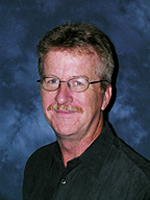
Since then, researchers, including Earl “Rusty” Lee, assistant professor of civil and environmental engineering at UD, have been developing comprehensive response systems that can be activated by a geographic information system (GIS) display. These systems are designed for use by emergency managers and those responsible for assessing the vulnerability of infrastructure systems.
“While major energy and communication providers like Consolidated Edison of New York (Con Ed) and Verizon can monitor their own systems, they can not 'see' into the conditions of systems they rely on” Lee said. “Before 9/11, a tool that would help decision-makers look at a 'system of systems' did not exist.”
Part of his research, with principal investigators John E. Mitchell and William A. Wallace, both of the Rensselaer Polytechnic Institute (Troy, N.Y.), involved listening to the stories of individuals at Verizon and Con Ed, Lee said.
“We wanted to develop something that a manager can use in case of an emergency or disaster,” Lee said. “While these managers could not give us actual details of their systems due to security concerns, they did give us a realistic idea of how their systems are built.”
Lee said his work in this area has resulted in the development of the Multi-Network Interdependent Critical Infrastructure Program for Analysis of Lifelines (MUNICIPAL).
“We used geographic information system (GIS) modeling done through databases and modeling software to generate a solution that addresses the priorities of everyone involved in such a situation,” Lee said. “The models let decision-makers set priorities and place resources toward a common goal.”
MUNICIPAL is designed to provide the capability to understand how a disaster can affect the interdependent system of civil infrastructures, allowing managers of such systems to assess the vulnerability of their own system due to its reliance on another system, Lee said.
Because academic researchers have the time to step outside the day-to-day operation of major systems, they can look at these systems from an objective point of view, Lee said.
“We do not decide issues like right or wrong. What we do is document things carefully,” Lee said. “We look at places and see what other systems or businesses need to operate.”
Lee holds a doctorate in decision sciences and engineering systems from the Rensselaer Polytechnic Institute, Troy, N.Y.
Funding for MUNICIPAL has included a grant by the National Science Foundation and the support of Consolidated Edison of New York and Verizon, as well as other New York City and New York state agencies.
In January, Lee presented the results of his research in a talk, “Restoration of Service in Interdependent Infrastructure Systems,” while a panelist at a conference held in New York City.
The conference, “Protecting New York from Terrorism and Disaster: Taking Stock, Setting Directions, Looking Forward,” was organized by Protect New York, an academic and professional society devoted to safeguarding New York state from acts of terrorism and disasters.
Topics included psychiatric casualties of disaster, law enforcement, medical surge capacity, transportation security, ethical and policy issues in disaster preparedness, emergency logistics, radiation emergencies, behavioral approaches to security and the securing of critical infrastructures in New York.
Article by Jerry Rhodes

